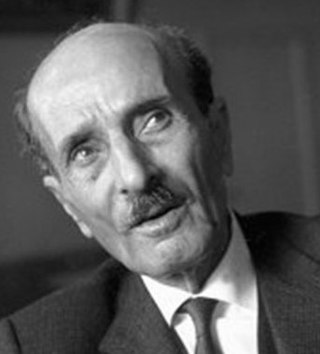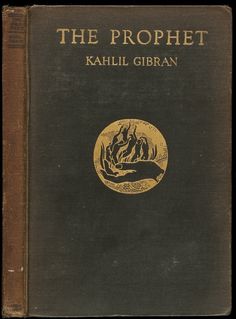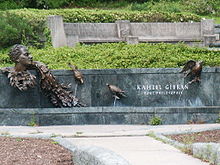
Daniel Chester French was an American sculptor of the late nineteenth and early twentieth centuries. He is best known for his 1874 sculpture The Minute Man in Concord, Massachusetts, and his 1920 monumental statue of Abraham Lincoln in the Lincoln Memorial in Washington, D.C.

Gibran Khalil Gibran, usually referred to in English as Kahlil Gibran, was a Lebanese-American writer, poet and visual artist; he was also considered a philosopher, although he himself rejected the title. He is best known as the author of The Prophet, which was first published in the United States in 1923 and has since become one of the best-selling books of all time, having been translated into more than 100 languages.

Copley Square, is a public square in Boston's Back Bay neighborhood, bounded by Boylston Street, Clarendon Street, St. James Avenue, and Dartmouth Street. The square is named for painter John Singleton Copley. Prior to 1883 it was known as Art Square due to its many cultural institutions, some of which remain today.

Forest Hills Cemetery is a historic 275-acre (111.3 ha) rural cemetery, greenspace, arboretum, and sculpture garden in the Forest Hills section of Jamaica Plain, a neighborhood in Boston, Massachusetts. The cemetery was established in 1848 as a public municipal cemetery for Roxbury, Massachusetts, but was privatized when Roxbury was annexed to Boston in 1868.

There are many outdoor sculptures in Washington, D.C. In addition to the capital's most famous monuments and memorials, many figures recognized as national heroes have been posthumously awarded with his or her own statue in a park or public square. Some figures appear on several statues: Abraham Lincoln, for example, has at least three likenesses, including those at the Lincoln Memorial, in Lincoln Park, and the old Superior Court of the District of Columbia. A number of international figures, such as Mohandas Gandhi, have also been immortalized with statues. The Statue of Freedom is a 19½-foot tall allegorical statue that rests atop the United States Capitol dome.

Mikha'il Nu'ayma, better known in English by his pen name Mikhail Naimy, was a Lebanese poet, novelist, and philosopher, famous for his spiritual writings, notably The Book of Mirdad. He is widely recognized as one of the most important figures in modern Arabic literature and one of the most important spiritual writers of the 20th century.

The Prophet is a book of 26 prose poetry fables written in English by the Lebanese-American poet and writer Kahlil Gibran. It was originally published in 1923 by Alfred A. Knopf. It is Gibran's best known work. The Prophet has been translated into over 100 different languages, making it one of the most translated books in history, as well as one of the best selling books of all time. It has never been out of print.
Youssef Saadallah Howayek (1883–1962) was a painter, sculptor and writer from Helta, in modern-day Lebanon.

The Gibran Khalil Gibran Garden is a 6,000-square-meter public garden in the Centre Ville area of Beirut, Lebanon, facing the UN House, the headquarters of ESCWA, the United Nations Economic and Social Commission for Western Asia.

Kahlil G. Gibran, sometimes known as "Kahlil George Gibran", was a Lebanese American painter and sculptor from Boston, Massachusetts. A student of the painter Karl Zerbe at the School of the Museum of Fine Arts, Boston, Gibran first received acclaim as a magic realist painter in the late 1940s when he exhibited with other emerging artists later known as the "Boston Expressionists". Called a "master of materials", as both artist and restorer, Gibran turned to sculpture in the mid-fifties. In 1972, in an effort to separate his identity from his famous relative and namesake, the author of The Prophet, Gibran Kahlil Gibran, who was cousin both to his father Nicholas Gibran and his mother Rose Gibran, the sculptor co-authored with his wife Jean a biography of the poet entitled Kahlil Gibran His Life And World. Gibran is known for multiple skills, including painting; wood, wax, and stone carving; welding; and instrument making.


Robert Emmet is a bronze statue of Robert Emmet by Jerome Connor. There are four examples: Massachusetts Avenue and 24th Street, N.W. Washington, D.C.; St Stephen's Green, Dublin; Golden Gate Park, San Francisco; Emmetsburg, Iowa.

Henry Wadsworth Longfellow is a bronze statue, by William Couper, and Thomas Ball. The statue depicts American poet Henry Wadsworth Longfellow. It is located at the intersection of M Street and Connecticut Avenue, N.W. Washington, D.C., and was dedicated on May 7, 1909.
Gebran is a well-known given name and family name in Arabic. It is also transliterated as Gibran, Jebran, Jibran, Joubran, Jubran, Goubran and Gubran. It might also appear with an additional "e" at the end, like in Gebrane, Gibrane etc.
Kahlil Gibran (1883–1931) was a Lebanese-American writer, poet and visual artist.

Mary Elizabeth Haskell, later Minis, was an American educator, best known for having been the benefactress of Lebanese-American writer, poet and visual artist Kahlil Gibran.
May Rihani was born in Beirut, though her family hails from Freike, Matn District, Lebanon. She is an expert on girls' education and women's empowerment. She worked in more than 40 countries in Africa, the Middle East, and Asia and visited 30 more to implement educational reform and in particular improve girls' education. She was a Senior Vice President of three leading US organizations that worked in International Development: Family Health International, the Academy for Educational Development (AED), and Creative Associates International. Ms Rihani served as the co-chair of the United Nations Girls' Education Initiative (UNGEI) between 2008 and 2010. She is fluent in Arabic, French and English, is a writer and poet, and a women's rights activist.

















